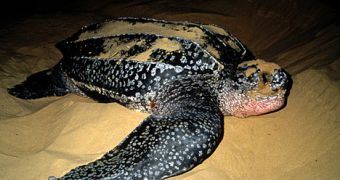The International Union for Conservation of Nature has updated its Red List, and has decided that leatherback sea turtles need no longer be classified as an endangered species.
The organization explains that it pulled these marine creatures off the endangered species list after learning that, over the past few years, their population in the northwest Atlantic Ocean has been steadily increasing.
Thus, leatherback turtles appear to have made a comeback in US and the Caribbean waters.
Despite no longer being believed to be in danger of going extinct in the near future, leatherback turtles are not yet out of the woods.
Long story short, the species is now listed as vulnerable, and conservationists argue that efforts must still be made to protect them.
Specifically, researchers working with the International Union for Conservation of Nature say that future conservation projects must focus on upping their headcount in the east and in the west Pacific.
This is because, according to several reports, these regions now house about 97% and 80% less leatherback turtles than they did in the past.
Leatherback turtles living in the Indian Ocean must also be kept a close eye on.
“The persistence of significant threats in all regions warrants concern for the future viability of even the largest subpopulations,” specialists say, as cited by Mongabay.
“Current efforts to protect leatherbacks, their offspring, and their habitats must be maintained—or even augmented, where possible—to reverse declines in Pacific and Indian Ocean subpopulations and to sustain population growth in the Northwest Atlantic,” they go on to argue.
Conservationists say that, presently, this species risks falling off the biodiversity map due to the fact that many leatherback turtles accidentally get caught in fishing nets and die.
A significant number of them are killed for their meat on a yearly basis, and some people even dig up and eat eggs laid by them. Coastal development, noise and light pollution, and climate change also threaten the species’ long-term survival.

 14 DAY TRIAL //
14 DAY TRIAL //